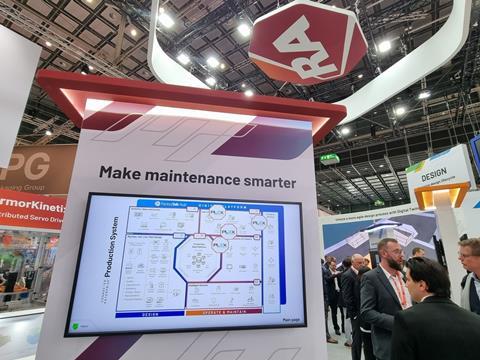
There is an ascending scale in the techniques and methodologies used to implement maintenance regimes in manufacturing according to Andreu Cuartiella, Lifecycle Services Commercial Manager, EMEA at Rockwell Automation.
The lowest level is that of a ‘reactive’ approach. Quite simply equipment will be ‘run to failure’ and only receive attention after it malfunctions.
Next up is ‘preventive’ maintenance. It aims to stop breakdowns from occurring through adherence to a pre-ordained timetable in which fixed maintenance routines will be implemented at regular times.
Then comes a ‘condition-based’ methodology. This means that maintenance is carried out when specific performance parameters such as temperatures or rotational speeds reach or exceed predefined levels.
The approach that provides the most business value, though, is that of ‘predictive’ maintenance. This means “not just looking at fixed parameters but how they are developing so that failures can be predicted and pre-emptive measures taken in order that they can be avoided.” The predictive approach is the technique that makes use of the most modern technologies and is most effective at avoiding the costs and disruption associated with unplanned downtime resulting from equipment breakdown.
In practice, says Cuartiella, predictive techniques utilise on-machine sensors to gather raw data, co-located edge computing for data collection and further workstation-level computing for visualisation, trending and analysis procedures. But the ultimate benefits of the approach are only realised when the information they generate is fed into two higher level systems – a computerised maintenance management system (CMMS) and one for asset performance management (APM).
As Cuartiella explains these will run in the Cloud and will utilise the data generated in manufacturing operations at enterprise level. “A CMMS deals with everything around maintenance,” he says. “An APM is more macroscopic – it looks at things from a production standpoint and is concerned with issues like asset performance and downtimes.”
In fact, as Cuartiella makes plain, it is in the software and not hardware that the overall potential of the predictive maintenance approach has been augmented in recent times. “The real developments recently have been in data processing techniques and not in acquisition or sensor technologies,” he says.
The ultimate objective of implementing all such systems nevertheless remains “to avoid the impact of unexpected equipment failure,” states Cuartiella. “The key words are reliability, maintainability and availability.”
The benefits of a properly implemented predictive maintenance strategy are real and quantifiable. Research has shown it can generate a tenfold increase in return on investment (ROI), a 25-30 percent reduction in maintenance costs and a 70-75 percent decrease in breakdowns meaning altogether a 35-45 percent reduction in downtimes.
Rockwell Automation has two such systems of its own to support its clients. Its CMMS is Fiix and its APM is Plex. Users can report their own specific performance improvements. A distillery, for instance, achieved a 50 percent increase in Overall Equipment Effectiveness (OEE) in an automated processing and bottling application through the use of Plex.
For the future, says Cuartiella, predictive maintenance will also be applied increasingly not just to the large-scale moving parts of machinery but to their control systems and even to electronic components. “We already started to look inside control cabinets,” he states. “Until recently electronic components were run to failure, but as an example in latest generation of PowerFlex AC Drives we can now predict their failure.”









![IMG_0166[1]](https://d2wrwj382xgrci.cloudfront.net/Pictures/100x67/3/9/4/12394_img_01661_444145.jpg)


No comments yet